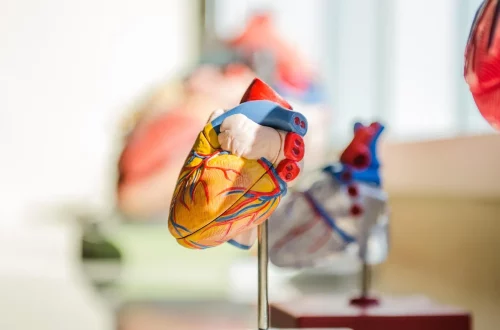-
Understanding the Anatomy and Function of the Forearm Dorsal Region
The forearm dorsal region, often overlooked in discussions of upper limb anatomy, plays a crucial role in the function and movement of the arm. Comprising a complex arrangement of muscles, tendons, nerves, and bones, this area is integral to various daily activities, from gripping and lifting to more intricate hand movements. Understanding the structure and function of the forearm dorsal region is essential not only for medical professionals but also for individuals looking to enhance their physical health and performance. The anatomy of the forearm dorsal region is intricate, with each component contributing to its overall functionality. This area is characterized by its unique muscular and skeletal structures that allow…
-
Can a TENS Unit Effectively Build Muscle Strength?
The pursuit of muscle strength and fitness has led many individuals to explore various methods beyond traditional weight training and exercise routines. One such method that has gained attention is the use of Transcutaneous Electrical Nerve Stimulation (TENS) units. Initially designed for pain relief, TENS units utilize electrical impulses to stimulate nerves and can have versatile applications in the realm of physical therapy and rehabilitation. However, an intriguing question arises: Can a TENS unit effectively build muscle strength? As more people seek out innovative approaches to enhance their physical capabilities, understanding the science behind TENS technology becomes essential. While the primary function of TENS is to alleviate pain, the underlying…
-
Effective Relief: The Benefits of Plantar Fasciitis Night Socks
Plantar fasciitis is a common foot condition that affects many individuals, often causing persistent pain and discomfort. This condition arises when the plantar fascia, a thick band of tissue that runs across the bottom of the foot, becomes inflamed. Activities such as running, standing for long periods, or wearing inadequate footwear can exacerbate this inflammation, leading to significant issues in everyday life. As this condition progresses, it can affect mobility and overall quality of life, making it essential to find effective relief methods. Many sufferers explore various treatment options, including physical therapy, orthotics, and even surgical interventions. However, one increasingly popular solution is the use of plantar fasciitis night socks.…
-
Effective Exercises for Non Weight Bearing Rehabilitation and Fitness
Effective rehabilitation and fitness programs are essential for individuals recovering from injuries or surgeries, especially when weight-bearing activities are not an option. Non-weight bearing exercises provide a safe and effective way to maintain physical fitness, enhance mobility, and promote healing while minimizing the risk of further injury. These exercises are particularly important for individuals dealing with conditions such as fractures, tendon injuries, or post-surgical recovery, where the body requires time to heal without additional stress. Understanding the role of non-weight bearing activities can significantly impact recovery outcomes. Engaging in appropriate exercises helps to maintain muscle strength, improve cardiovascular health, and increase flexibility. Furthermore, incorporating these exercises into a rehabilitation program…
-
Understanding Lower Back Ache After Deadlifts: Causes and Solutions
Lower back ache is a common complaint among fitness enthusiasts, particularly those who engage in weightlifting activities such as deadlifts. This discomfort can often be attributed to various factors, including improper technique, inadequate warm-up routines, or even underlying health issues. The deadlift is a compound exercise that effectively targets multiple muscle groups, including the glutes, hamstrings, and lower back. However, if not performed correctly, it can lead to strain and pain in the lower back region. As individuals strive to achieve their fitness goals, understanding the mechanics of the body becomes increasingly important. The lower back, or lumbar region, is particularly susceptible to strain due to its role in supporting…
-
Unlocking the Benefits of Movoflex Advanced for Enhanced Mobility
Mobility is a fundamental aspect of our everyday lives, influencing not only our physical health but also our emotional well-being and overall quality of life. As we age or face various health challenges, maintaining optimal mobility becomes increasingly important. It allows us to perform daily activities with ease, engage in social interactions, and enjoy life to the fullest. However, many individuals struggle with mobility issues that can limit their independence and hinder their ability to participate in activities they once loved. Fortunately, advancements in health and wellness products have made it possible to enhance mobility and improve quality of life. One such product gaining attention is Movoflex Advanced. This innovative…
-
Understanding Canine Shoulder Dislocation: Causes and Treatment Options
Canine shoulder dislocation is a condition that can lead to significant discomfort and mobility issues in dogs. Understanding the underlying causes and treatment options available is essential for pet owners who want to ensure the well-being of their furry companions. The shoulder joint in dogs is a complex structure that allows for a wide range of motion, but this flexibility also makes it vulnerable to injury. Dogs may experience shoulder dislocation due to various factors, including trauma, genetic predisposition, or degenerative conditions. Recognizing the signs of this injury is crucial for timely intervention and recovery. Symptoms can range from limping and reluctance to use the affected limb to visible deformities…
-
Understanding Canine Shoulder Dislocation: Causes and Treatment Options
Understanding canine shoulder dislocation is crucial for dog owners and enthusiasts alike. The shoulder joint in dogs is a complex structure that allows for a wide range of motion, contributing to their agility and physical capabilities. However, this flexibility also makes the shoulder susceptible to injuries, including dislocation. A dislocated shoulder can cause significant pain and discomfort, affecting a dog’s ability to perform daily activities such as walking, running, and playing. Knowing the underlying causes of such injuries is essential for prevention and early intervention. In many cases, shoulder dislocations occur due to trauma, such as falls or collisions, but can also result from genetic predispositions or degenerative conditions. Understanding…





























